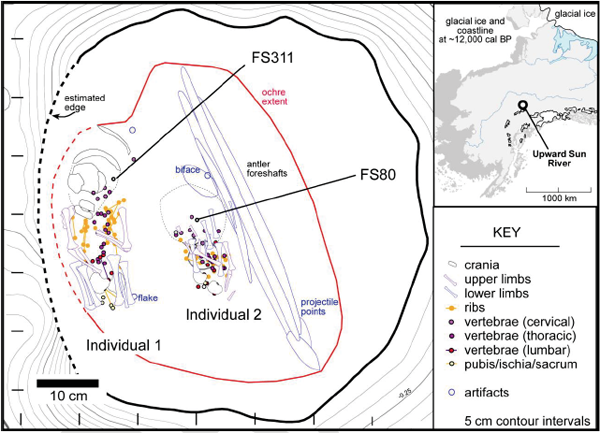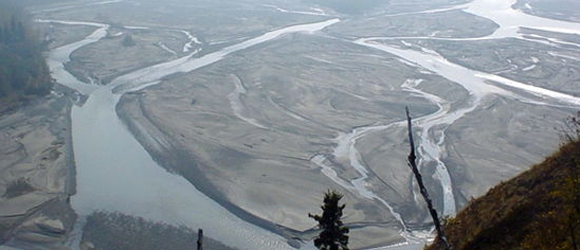DNA of two infants buried in Alaska shows genetic diversity of early Beringian populations

LAWRENCE — A new DNA analysis of an infant and a pre-term fetus buried together in central Alaska 11,500 years ago provides a clearer picture of the genetic diversity present in the ancestors of Native Americans.
The study published today, Oct. 26, in PNAS includes co-authors Jennifer Raff, a University of Kansas assistant professor of anthropology, and Dennis O'Rourke, an alumnus who will return to KU in January as a Distinguished Foundation Professor.
The findings are significant because the date of the burials is only a few thousand years after the initial dispersal of people from Beringia into the Americas and there are few individuals dating prior to 8,000 years ago from which scientists have genetic data, Raff said.
The research fills a gap into the genetic record of populations that migrated from Siberia via the Bering Land Bridge before eventually spreading south across the Americas. The analysis of the two children's mitochondrial genomes, which reveals a person's lineage from the mother, revealed the children belonged to mitochondrial haplogroups C1b and B2, both of which are rare or absent in contemporary Alaskan populations in the region.
"This shows us that not only was genetic diversity greater in this region in the past but is also consistent with predictions from the Beringian Standstill Hypothesis, a model that posits that a stable resident population containing the ancestors of contemporary Native Americans lived in Beringia for a period of time variously estimated at less than 8,000 years or as high as 15,000 years," Raff said.
Archaeological and genetic records have consistently indicating the Bering Land Bridge served as the primary entry point from Asia to the Americas during the Late Pleistocene era; however, there are gaps in our knowledge. Rising sea levels have separated Alaska from Siberia and covered the land bridge, inundating likely sites of human occupation or burial or both.
The two individuals were buried in a residential feature at the Upward Sun River site near the confluence of the Little Delta and Tanana rivers in central Alaska. A third individual — from whom DNA was not obtained for this study — was cremated at the site.
Because the two children's DNA belonged to separate mitochondrial haplogroups, they did not share the same mother.
"This is the first time we've been able to look at DNA from multiple burials in such an early context in the Americas," Raff said. "And these results give us an important insight into mortuary practices and ceremonial behavior. Namely, that children buried together didn't necessarily have to be full siblings."
Future genetic testing would shed more insight into the infants' biological relationships, including whether they shared the same father, she said.
Raff added the identification of the two haplogroups are significant from burials dating so close to migration into Beringia because both groups, B2 and C1b, are commonly found in Native Americans populations that settled to the south across North and South America, though not present-day Alaska populations.
"We are very sure of where the ancestral gene pool of ancient Native Americans came from, but this is letting us get at some of the more fine details of the migration, such as timing," she said.
The research team conducted the excavation and genetic analysis of the Upward Sun River site with the full consent and permission of the Healy Lake Tribal Council and Tanana Chiefs Conference in Alaska.
"This partnership is a good case study for how these kinds of things should be done," Raff said.
The study's lead author, Justin Tackney, is a graduate research assistant at the University of Utah under O'Rourke. Tackney is also scheduled to join Raff and O'Rourke at KU later this academic year as a postdoctoral researcher and manager of KU’s soon-to-be completed ancient DNA facility.
Top image courtesy Jennifer Raff.
Bottom image: A view of the Delta and Tanana rivers, by Jeremy Austin, via WikiCommons.
